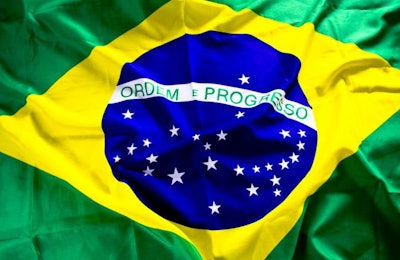
Compared to the previous month, average costs of production in Brazil fell by a further 4.3 and 4.4 percent in March 2017 for pig and broilers, respectively, according to the CIAS, the Central Intelligence Poultry and Swine with the Brazilian Agricultural Research Corporation (Embrapa).
Cheaper feed helps broiler production cost fall in March
The broiler production cost index, ICPFrango, stood at 187.2 points for March, which compares with 202.3 in January, and 195.8 in February this year.
One year ago, the index was 214.8, and it rose to a peak of more than 242.3 in June 2016, pushed up by very high feed prices.
Nutrition makes up almost 66.9 percent of the total cost of broiler production, and so the continuing fall in the cost of feed is the main reason for the decline in ICPFrango since the middle of last year. The reduction was a little over 4.3 percent between February and March 2017, and almost 11.3 percent since the start of the year.
There were also marginal falls over the last month in depreciation, energy and heating, and the cost of capital.
Compared with the same month of 2016, transport and labor costs during broiler production were slightly higher in March this year – by 0.37 and 0.20 percent, respectively.
Pig production cost down 12.8 percent so far this year
Average costs for pig producers, as measured by the cost index, ICPSuíno, have fallen each month since their peak of more than 253.7 in June of 2016. In March 2017, CIAS calculated the index to be 192.7, which compares with 211.5 in January, and 201.4 in February. The index stood at 217.8 in March 2016, so it is now 11.3 percent below the year-ago level.
As for poultry, it was the reduction in feed prices that has driven down the index, with a fall of 4.2 percent during March. Nutrition contributes almost 73.3 percent of the total production cost in the ICPSuíno.
Compared to March of 2016, average feed costs in pig production are now 12.7 percent lower while transport and labor are more expensive by almost 1.0 and 0.5 percent, respectively.
The indices of production costs were created in 2011 by socioeconomics team of Embrapa Swine and Poultry and the National Food Supply Agency (Conab). The ICPFrango score represents typical broiler production costs for a ventilated poultry shed in the state of Paraná, while ICPSuíno is based on a typical “full cycle” pig production system in the state of Santa Catarina.

















